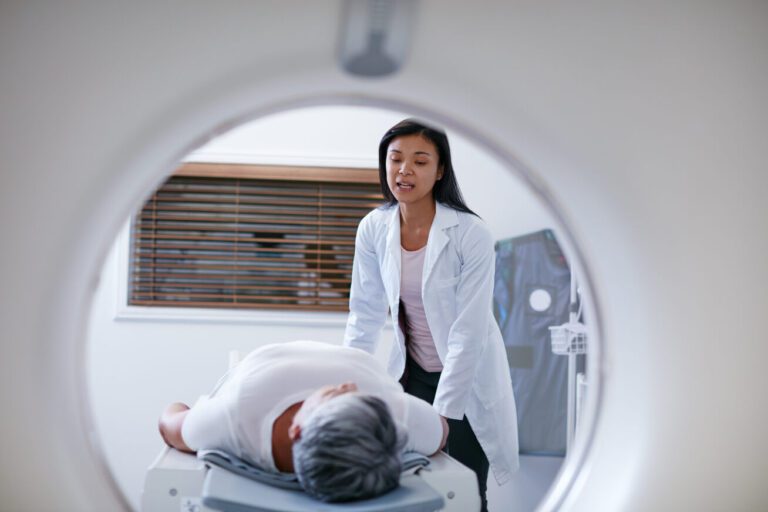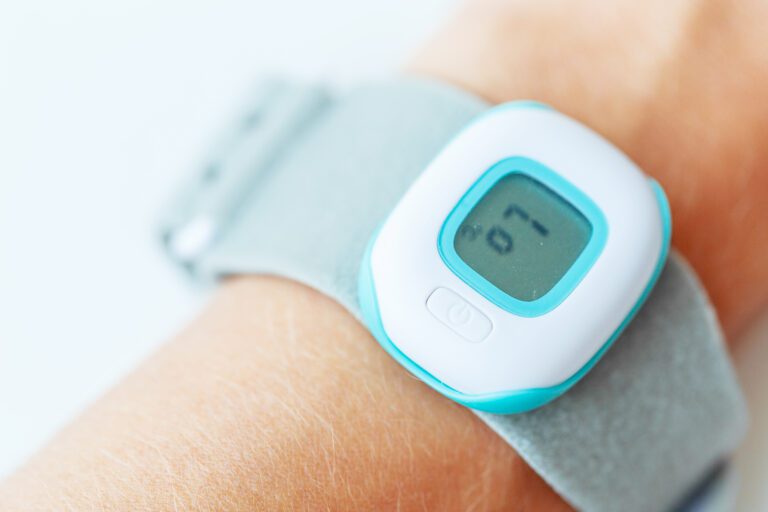The Role of Semiconductors in Medical Devices

More from the Category
The healthcare industry is evolving rapidly in today’s digital age. Medical devices now play a vital role in patient care, diagnosis, and treatment. From wearable health monitors to advanced imaging systems, technology is reshaping the way healthcare operates.
At the core of these advancements are semiconductors. These tiny electronic components are essential for powering modern medical devices. They enable faster diagnostics, more precise treatments, and improved patient outcomes. Without them, many of today’s medical breakthroughs would not be possible.
Semiconductors: The Building Blocks of Medical Devices
Semiconductors, mainly made from silicon, are the foundation of modern electronics. Their unique electrical properties allow for precise control of electric current, making them essential in various applications.
In medical devices, semiconductors serve as central processors, handling data acquisition, analysis, and transmission. They convert signals, process information, and relay critical data, enabling accurate diagnostics and effective treatments. This integration has revolutionized healthcare, leading to more advanced and reliable medical technologies. As semiconductor technology continues to advance, we can expect even more groundbreaking innovations that will further improve patient care and save lives.
Diagnostics
Semiconductors are essential for accurate and timely diagnostics, providing the power, speed, and precision needed to process vast amounts of data and generate high-resolution images.
In medical imaging, semiconductors play a key role by:
· Converting analog signals into digital data for efficient image processing and analysis
· Creating strong magnetic fields essential for MRI machines
· Generating X-rays in CT scans
Their capabilities enable advanced imaging technologies that drive diagnostic precision.
Beyond imaging, semiconductors also enhance biosensors—devices designed to detect and measure biomarkers, which are substances in the body that indicate disease. Semiconductor-based biosensors can identify biomarkers for conditions such as cancer, diabetes, and infectious diseases, allowing for earlier and more precise detection.
Learn more about medical sensors here

As semiconductor technology advances, it continues to transform disease diagnosis by making it more accurate, cost-effective, and accessible. This progress not only improves patient outcomes but also enhances the efficiency of the healthcare system.
Here are some specific ways semiconductors improve medical diagnostics:
• Computed Tomography (CT) Scans: Semiconductor detectors convert X-rays into digital images, allowing clear visualization of internal structures such as bones, organs, and tumors.
• Magnetic Resonance Imaging (MRI): MRI machines rely on semiconductors to generate strong magnetic fields and convert radio waves into detailed digital images of the body.
• Ultrasound Imaging: Semiconductors produce the sound waves used in ultrasound imaging and transform echoes into digital images for accurate diagnostics.
• Biosensors: Semiconductor chips in biosensors detect and measure biomarkers, aiding in the diagnosis of diseases like cancer, diabetes, and heart disease.
With continuous advancements in semiconductor technology, medical diagnostics will only become more efficient, leading to earlier disease detection, improved treatment options, and better overall patient care.
Monitoring and Wearable Devices
Semiconductors have transformed patient monitoring, enabling the development of wearable medical devices that continuously track vital signs. Patients can wear these devices at home, work, or even while exercising, allowing healthcare providers to monitor health data around the clock and detect early warning signs of potential issues.
Semiconductors also power wireless patient monitoring systems, which allow real-time data transmission to healthcare providers. This immediate connectivity means providers can respond to changes in a patient’s condition as they happen, enhancing patient outcomes through timely intervention.
These advancements have also led to more sophisticated monitoring devices that collect and analyze a broad range of data, including heart rate, blood pressure, temperature, oxygen levels, and brain activity. Such data supports long-term health tracking and early problem detection.
Wearable devices equipped with semiconductors empower patients to play an active role in their healthcare. By tracking and sharing their health data with providers, patients can make informed decisions about their treatment and engage more fully in their own care.
Healthcare professionals also benefit from the detailed insights provided by these devices. With access to comprehensive patient data, they can make better-informed treatment decisions, further improving patient outcomes.

Overall, semiconductors have revolutionized patient monitoring by enabling the creation of advanced, wearable, and wireless devices. These innovations empower patients to manage their health actively and support healthcare professionals in delivering precise care.
Examples of wearable medical devices using semiconductors include:
· Heart rate monitors that track heart rhythms and help detect arrhythmias
· Blood pressure monitors that identify hypertension
· Temperature monitors for fever detection
· Oxygen monitors that detect hypoxemia
· Brainwave monitors that diagnose neurological disorders
These are just a few examples of the many wearable medical devices available today. As semiconductor technology advances, we can expect even more innovative and sophisticated devices that will further enhance patient care and improve healthcare outcomes.
Therapeutic Devices
Semiconductors play a crucial role in therapeutic medical devices by providing the power, precision, and reliability needed for safe and effective treatments. In implantable devices, they enable:
- • Pacemakers: Regulate heart rate through precise electrical stimulation.
- • Neurostimulators: Treat neurological disorders like Parkinson’s and epilepsy with targeted electrical pulses.
- • Cochlear implants: Restore hearing by converting sound into controlled electrical signals.
- These devices depend on semiconductors to deliver highly accurate electrical pulses, which are essential for managing these conditions safely and effectively.
Beyond precision, semiconductors provide the computing power and energy efficiency required for the continuous, reliable operation of life-saving devices. For example, pacemakers must constantly monitor heart rate and adjust electrical pulses in real time, a task made possible by semiconductor technology.

Another key benefit of semiconductors in implantable devices is energy efficiency. Since these devices run on batteries with limited lifespans, optimizing power consumption helps extend battery life. This reduces the need for frequent replacements, minimizing surgical procedures and improving patient outcomes.
Additional Examples of Semiconductor-Powered Therapeutic Devices:
- • Defibrillators: Deliver electrical shocks to restore normal heart rhythm.
- • Insulin pumps: Provide precise insulin delivery for diabetes management.
- • Deep brain stimulators: Treat neurological disorders like Parkinson’s with electrical pulses.
- • Bladder pacemakers: Use electrical stimulation to manage urinary incontinence.
- These are just a few examples of the many therapeutic devices powered by semiconductors. As technology advances, these devices will become even more sophisticated, further improving patient care and expanding treatment options.
Drug Delivery Systems
Semiconductors have revolutionized drug delivery by enabling personalized, controlled, and wireless systems that improve treatment effectiveness and reduce side effects. These advancements help ensure that medications are administered in precise doses, at the right time, and in the most effective way for each patient.
One major innovation is personalized drug delivery systems, which release medication in specific doses based on individual needs. This approach optimizes treatment while minimizing side effects. For example, a diabetes patient may require insulin at varying times depending on blood sugar levels. A personalized delivery system can automatically release the right amount of insulin as needed, helping maintain safe glucose levels.
Semiconductors also enable controlled-release drug delivery systems, which gradually release medication over a set period. This improves patient adherence to treatment plans and reduces the risk of overdosing. For instance, a hypertension patient who needs daily medication could benefit from a controlled-release system that administers the dose steadily over 24 hours, ensuring consistent blood pressure control.

Another major advancement is wireless drug delivery systems, which communicate with healthcare providers in real time. These systems ensure that patients receive accurate doses when needed and allow for immediate treatment adjustments. For example, a cancer patient receiving chemotherapy through a wireless system can have treatment data sent directly to their doctor, allowing for personalized, real-time adjustments based on their response.
Examples of Semiconductor-Driven Drug Delivery Innovations:
- • Implantable pumps: Deliver medication directly into the bloodstream for precise dosing.
- • Transdermal patches: Administer medication through the skin for continuous absorption.
- • Nanoparticles: Target specific cells or tissues for highly precise drug delivery.
- These innovations are just a few ways semiconductors are transforming drug delivery. As semiconductor technology continues to evolve, even more advanced and effective systems will emerge, further improving patient care and treatment outcomes.
The Future of Healthcare: Powered by Semiconductors
Semiconductors have transformed healthcare by bringing unprecedented precision, efficiency, and patient-focused innovation to medical devices. As technology advances, their role will only grow, shaping the future of healthcare with even smarter, more connected, and more personalized solutions.
With semiconductors becoming smaller, more powerful, and energy-efficient, we can expect groundbreaking advancements in wearable devices, implantable systems, and point-of-care diagnostics. These innovations will lead to better disease management, lower healthcare costs, and increased patient engagement. Additionally, the integration of artificial intelligence and machine learning with semiconductor technology will revolutionize data analysis, enabling more accurate diagnoses and highly personalized treatment plans.
The future of healthcare depends on continuous advancements in semiconductor technology. By leveraging these innovations, medical device manufacturers, researchers, and healthcare providers are working together to develop cutting-edge solutions that improve patient care and address critical medical challenges.
Our IC & Semiconductor Sourcing Specialists are ready to support your needs with expert guidance and high-quality components. Contact us today!